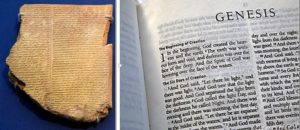
I. Skepticism Toward the Gospels’ Witness of the Deity of Christ
Bart Ehrman rejects the deity of Christ for two reasons. First, he insists that Jesus did not claim to be God during his lifetime and neither did his disciples. Second, Christian beliefs about Jesus Christ changed over time. The disciples initially regarded Jesus as a man, but after reportedly having experiences of visions of the resurrected Jesus, they concluded that since the exalted Jesus was no longer physically present on earth, God must have taken him to heaven. The Son of Man became the Son of God. At the beginning, there was no belief in the pre-existence of Jesus, but over time the pre-existent Christ was adopted in order to explain the incarnation. Ehrman postulates that the deification of Jesus was due to the influence of pagan mythologies and Jewish angelology.
Ehrman finds no evidence from the gospels that Jesus went about Palestine publicly declaring “I am God.” However, Ehrman fails to consider the historical context which led Jesus to refrain from making such a public declaration. Instead of weighing calmly Jesus’ declaration of deity, the Jews would have reacted violently to Jesus as one guilty of blasphemy. They did try to stone him, after all. It would have been futile for Jesus to try to convince the intransigent Jews who had already made up their minds to reject Jesus’ teaching, no matter what evidence he could offer to back up his claim. Continue reading “Bart Ehrman’s Historical Revisionism. Part 3/3. Ehrman Misplaces Jesus among the gods”
 Bart Ehrman’s primary mission in life is undeniable. It is to discredit Christianity and to deconvert Christians from their faith. Ehrman’s attack on Christianity has been effective because he claims to be speaking as an objective historian (which is debatable), in contrast to apologists and theologians defending their faith and because he is speaking as a lapse fundamentalist with insider-knowledge. Ehrman’s attack on Christianity is comprehensive, but I shall only highlight three of his favorite lines of attack on Christianity.
Bart Ehrman’s primary mission in life is undeniable. It is to discredit Christianity and to deconvert Christians from their faith. Ehrman’s attack on Christianity has been effective because he claims to be speaking as an objective historian (which is debatable), in contrast to apologists and theologians defending their faith and because he is speaking as a lapse fundamentalist with insider-knowledge. Ehrman’s attack on Christianity is comprehensive, but I shall only highlight three of his favorite lines of attack on Christianity. 





